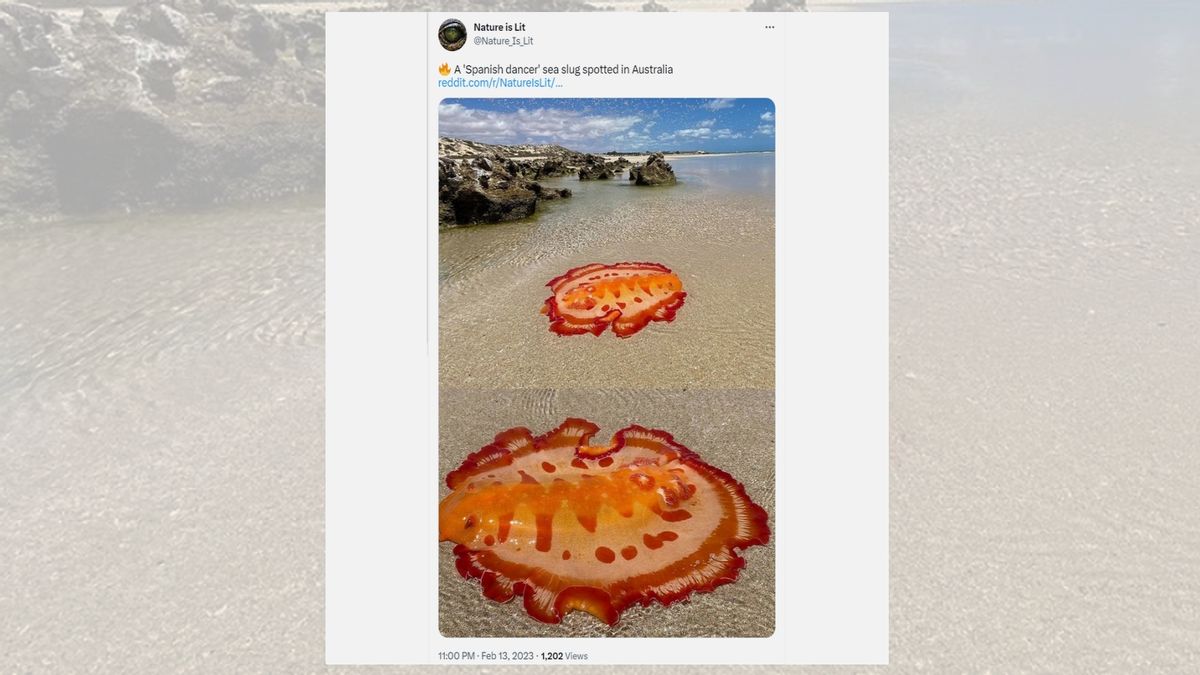The marine animal featured in the February 2023 Reddit post below has been gracing internet discussions since 2021. It's known as a "Spanish dancer" sea slug for reasons that are clear when you see it gliding through water in videos.
According to a Jan. 20, 2021, Daily Mail article, the photograph was taken in the shallow waters of Coral Bay on the west coast of Australia. It was attributed to Instagram user @Adigaz, whose account was private as of this writing about two years later. "The scientifically named Hexabranchus sanguineus is commonly known as the Spanish dancer, with it bearing a striking resemblance to a flamenco dancer's skirt," the Mail reported.
Here are a couple videos showing the Spanish dancer in motion:
Though they are sometimes mistaken for jellyfish, the Hexabranchus sanguineus is among the largest nudibranchs (sea slugs) known to science. According to MarineBio.org, they mainly feed on sponges and tend to inhabit areas where sponge species are common.
This species inhabits the waters of the tropical Indo-Pacific from East Africa to the Red Sea, French Polynesia, Japan and Australia. They are found as deep as 50 meters but predominantly remain in shallower waters no deeper than 20 meters amongst coral and rocky reefs and sometimes on rubble and sandy areas. They also have relatives that reside in Caribbean; this species is closely related to the Caribbean Spanish Dancer (Hexabranchus morsomus).
Some people have jokingly described the Spanish dancer as a "sea pizza" because of its appearance. Eating them is not recommended, however, because even though they're not venomous, they do reportedly absorb dangerous toxins from prey. According to a blog post on Mares.com:
Bright coloration in animals is usually a warning sign for predators. If an animal has strong, bright colors, it is usually trying to send you a message that you should stay away, as they are highly toxic and dangerous. The Spanish dancer is no exception to this rule. Even though their bodies do not produce any toxins, they are able to assimilate the poisons of marine sponges and toxic jellyfish on which they prey, proving once again that the proverb 'You are what you eat' is true.

